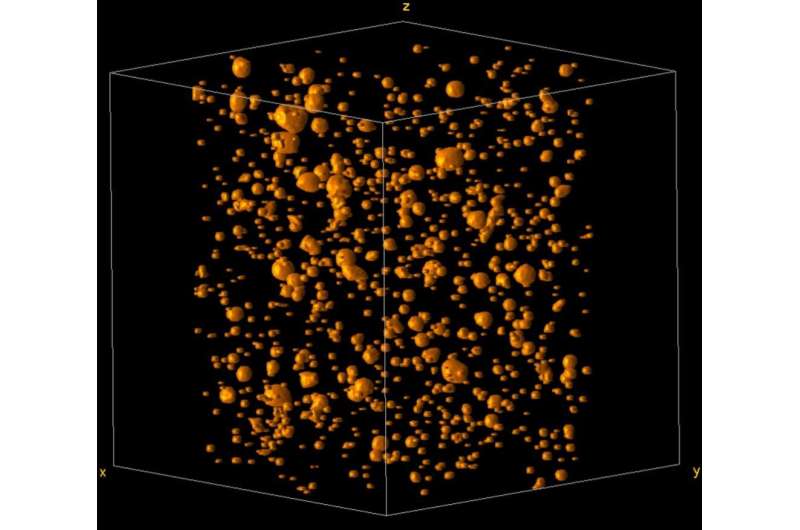Researchers analyse how 3-D printed metals fracture

3-D-printed metals have been used since the 1980s to produce a wide range of parts for various industries. These materials often have tiny pores inside them (around dozens of micrometers in size), which can get bigger when a load is applied to them, due to their manufacturing process. The team of researchers has analyzed what happens to these "micro voids" when applying a load to them in order to understand how these ductile metals (capable of absorbing energy) fracture.
"For example, most of the structural elements in cars are made of ductile metal, so that they are able to absorb energy in the event of a collision. This means that security will be increased if a traffic accident occurs. So, understanding and predicting how ductile metals fracture is equal to optimizing the design of energy absorbing structures in impacts in critical industrial sectors," says one of the study's authors, Guadalupe Vadillo from the Nonlinear Solid Mechanics research team in the UC3M's Department of Continuum Mechanics and Structural Analysis.
Her study was recently published in the International Journal of Plasticity and has identified two mechanisms which cause the failure of the material. Firstly, the appearance and growth of micro pores which cause the material to soften until it breaks, and secondly, coalescence, which occurs when several micro pores within the material join and interact with each other, accelerating the fracture.
"During this work, we have identified how the micro voids or intrinsic micro pores in the material grow, shrink and interact with each other by accelerating or delaying the fracture of this material, depending on the viscosity of the material (how quickly it deforms when a load is applied), the speed at which the load is applied to the material and the loading path (direction and other factors)," Guadalupe Vadillo says.
Advances in this field improve our understanding of how 3-D printed ductile metals behave and will help us design and manufacture sturdier parts and components in a variety of industries. These materials can be used in processes where energy absorption is important, such as in the manufacture of new fuselages in the aerospace industry, different car parts in the automotive industry or for developing implants in the biomedical industry.
More information: Javier Reboul et al. Influence of strain rate sensitivity on localization and void coalescence, International Journal of Plasticity (2019). DOI: 10.1016/j.ijplas.2019.09.007
Provided by Carlos III University of Madrid




















